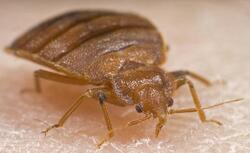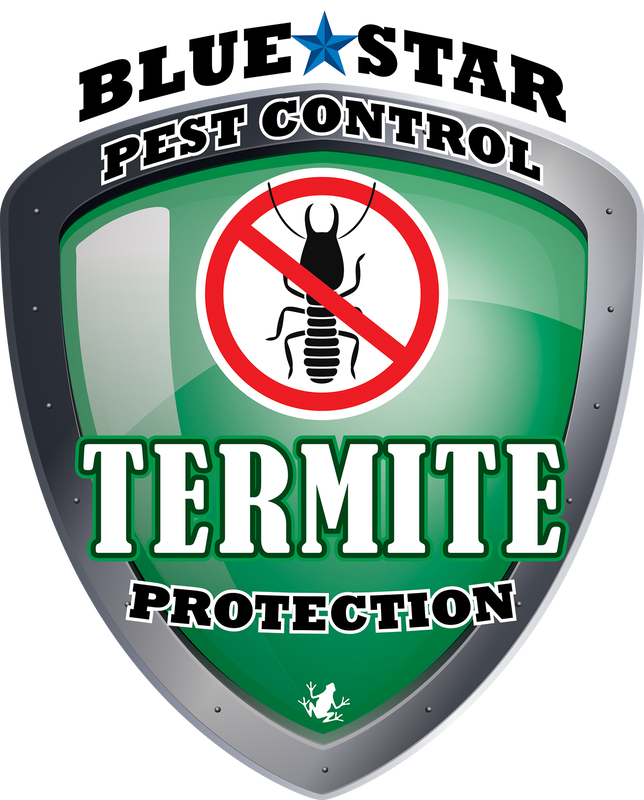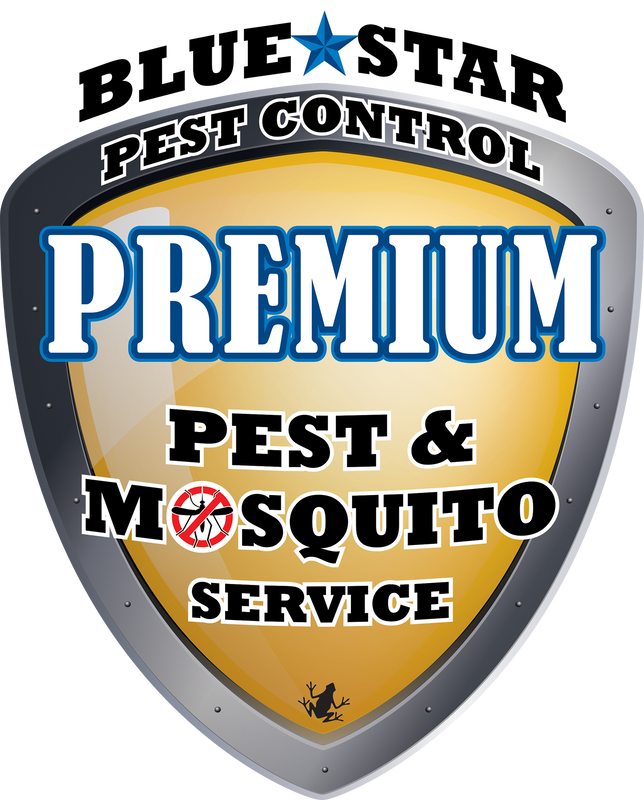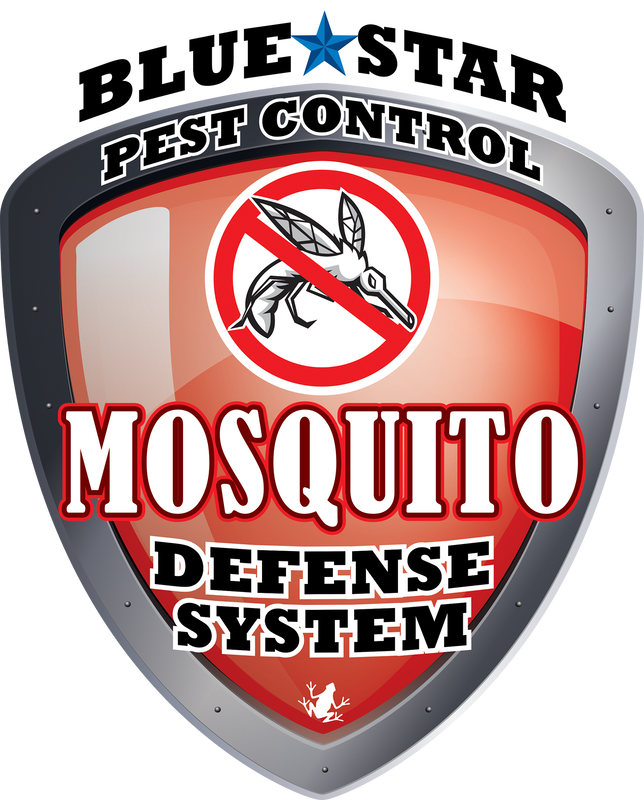Bed Bugs
|
|
|
|
Bed Bug Facts
Distribution
Bed bugs are fairly cosmopolitan. Cimex lectularius is most frequently found in the northern temperate climates of North America, Europe, and Central Asia, although it occurs sporadically in southern temperate regions. The tropical bed bug, C. hemipterus, is adapted for semitropical to tropical climates and is widespread in the warmer areas of Africa, Asia, and the tropics of North America and South America. In the United States, C. hemipterus occurs in Florida.
Identification
Adult bed bugs are brown to reddish-brown, oval-shaped, flattened, and about 3/16 to 1/5 inch long. Their flat shape enables them to readily hide in cracks and crevices. The body becomes more elongate, swollen, and dark red after a blood meal. Bed bugs have a beaklike piercing-sucking mouthpart system. The adults have small, stubby, nonfunctional wing pads. Newly hatched nymphs are nearly colorless, becoming brownish as they mature. Nymphs have the general appearance of adults. Eggs are white and about 1/32 inch long.
Life Cycle
Female bed bugs lay from one to twelve eggs per day, and the eggs are deposited on rough surfaces or in crack and crevices. The eggs are coated with a sticky substance so they adhere to the substrate. Eggs hatch in 6 to 17 days, and nymphs can immediately begin to feed. They require a blood meal in order to molt. Bed bugs reach maturity after five molts. Developmental time (egg to adult) is affected by temperature and takes about 21 days at 86° F to 120 days at 65° F. The nymphal period is greatly prolonged when food is scarce. Nymphs and adults can live for several months without food. The adult's lifespan may encompass 12-18 months. Three or more generations can occur each year.
Habits
Bed bugs are fast moving insects that are nocturnal blood-feeders. They feed mostly at night when their host is asleep. They are parasites that preferentially feed on humans. If people aren't available, they will feed on other warm-blooded animals, including birds, rodents, bats, and pets. After using their sharp beak to pierce the skin of a host, they inject a salivary fluid containing an anticoagulant that helps them obtain blood. Nymphs may become engorged with blood within three minutes, whereas a full-grown bed bug usually feeds for ten to fifteen minutes. They then crawl away to a hiding place to digest the meal. When hungry, bed bugs again search for a host. These pest hide during the day in dark, protected sites. They seem to prefer fabric, wood, and paper surfaces and usually occur in close proximity to the host (they can travel far distances). Bed bugs initially can be found about tufts, seams, and folds of mattresses, later spreading to crevices in the bedstead. In heavier infestations, they also may occupy hiding places farther from the bed. They may hide in window and door frames, electrical boxes, floor cracks, baseboards, furniture, and under the tack board of wall-to-wall carpeting. Bed bugs often crawl upward to hide in pictures, wall hangings, drapery pleats, loosened wallpaper, cracks in plaster, and ceiling moldings.
Injury
The bite is painless and the salivary fluid injected by bed bugs typically causes the skin to become irritated and inflamed, although individuals can differ in their sensitivity. A small, hard, swollen, white welt may develop at the site of each bite. This is accompanied by severe itching that lasts for several hours to days. Scratching may cause the welts to become infected. The amount of blood loss due to bed bug feeding typically does not adversely affect the host. Rows of three or so welts on exposed skin are characteristic signs of bed bugs. Welts do not have a red spot in the center such as is characteristic of flea bites. Some individuals respond to bed bug infestations with anxiety, stress, and insomnia but bed bugs are not known to transmit disease.
Tell-tale Signs
A bed bug infestation can be recognized by blood stains from crushed bugs or by rusty (sometimes dark) spots of excrement on sheets and mattresses, bed clothes, and walls. Fecal spots, eggshells, and shed skins may be found in the vicinity of their hiding places. An offensive, sweet, musty odor from their scent glands may be detected when bed bug infestations are severe.
Prevention
Do not bring infested items into one's home. It is important to carefully inspect clothing and baggage of travelers, being on the lookout for bed bugs and their tell-tale fecal spots. Also, inspect secondhand beds, bedding, and furniture. Caulk cracks and crevices in the building exterior and also repair or screen openings to exclude birds, bats, and rodents that can serve as alternate hosts for bed bugs. In hotels, apartments, and other multiple-type dwellings, it is advisable to also inspect adjoining units since bed bugs can travel long distances.
Sanitation
Sanitation measures include frequently vacuuming the mattress and premises, laundering bedding and clothing in hot water, and cleaning and sanitizing dwellings. After vacuuming, immediately place the vacuum cleaner bag in a plastic bag, seal tightly, and discard in a container outdoors-this prevents captured bed bugs from escaping into the home. A stiff brush can be used to scrub the mattress seams to dislodge bed bugs and eggs. Discarding the mattress is another option, although a new mattress can quickly become infested if bed bugs are still on the premises. Steam cleaning of mattresses generally is not recommended because it is difficult to get rid of excess moisture, which can lead to problems with mold, mildew, house dust mites, etc.
Bed bugs are fairly cosmopolitan. Cimex lectularius is most frequently found in the northern temperate climates of North America, Europe, and Central Asia, although it occurs sporadically in southern temperate regions. The tropical bed bug, C. hemipterus, is adapted for semitropical to tropical climates and is widespread in the warmer areas of Africa, Asia, and the tropics of North America and South America. In the United States, C. hemipterus occurs in Florida.
Identification
Adult bed bugs are brown to reddish-brown, oval-shaped, flattened, and about 3/16 to 1/5 inch long. Their flat shape enables them to readily hide in cracks and crevices. The body becomes more elongate, swollen, and dark red after a blood meal. Bed bugs have a beaklike piercing-sucking mouthpart system. The adults have small, stubby, nonfunctional wing pads. Newly hatched nymphs are nearly colorless, becoming brownish as they mature. Nymphs have the general appearance of adults. Eggs are white and about 1/32 inch long.
Life Cycle
Female bed bugs lay from one to twelve eggs per day, and the eggs are deposited on rough surfaces or in crack and crevices. The eggs are coated with a sticky substance so they adhere to the substrate. Eggs hatch in 6 to 17 days, and nymphs can immediately begin to feed. They require a blood meal in order to molt. Bed bugs reach maturity after five molts. Developmental time (egg to adult) is affected by temperature and takes about 21 days at 86° F to 120 days at 65° F. The nymphal period is greatly prolonged when food is scarce. Nymphs and adults can live for several months without food. The adult's lifespan may encompass 12-18 months. Three or more generations can occur each year.
Habits
Bed bugs are fast moving insects that are nocturnal blood-feeders. They feed mostly at night when their host is asleep. They are parasites that preferentially feed on humans. If people aren't available, they will feed on other warm-blooded animals, including birds, rodents, bats, and pets. After using their sharp beak to pierce the skin of a host, they inject a salivary fluid containing an anticoagulant that helps them obtain blood. Nymphs may become engorged with blood within three minutes, whereas a full-grown bed bug usually feeds for ten to fifteen minutes. They then crawl away to a hiding place to digest the meal. When hungry, bed bugs again search for a host. These pest hide during the day in dark, protected sites. They seem to prefer fabric, wood, and paper surfaces and usually occur in close proximity to the host (they can travel far distances). Bed bugs initially can be found about tufts, seams, and folds of mattresses, later spreading to crevices in the bedstead. In heavier infestations, they also may occupy hiding places farther from the bed. They may hide in window and door frames, electrical boxes, floor cracks, baseboards, furniture, and under the tack board of wall-to-wall carpeting. Bed bugs often crawl upward to hide in pictures, wall hangings, drapery pleats, loosened wallpaper, cracks in plaster, and ceiling moldings.
Injury
The bite is painless and the salivary fluid injected by bed bugs typically causes the skin to become irritated and inflamed, although individuals can differ in their sensitivity. A small, hard, swollen, white welt may develop at the site of each bite. This is accompanied by severe itching that lasts for several hours to days. Scratching may cause the welts to become infected. The amount of blood loss due to bed bug feeding typically does not adversely affect the host. Rows of three or so welts on exposed skin are characteristic signs of bed bugs. Welts do not have a red spot in the center such as is characteristic of flea bites. Some individuals respond to bed bug infestations with anxiety, stress, and insomnia but bed bugs are not known to transmit disease.
Tell-tale Signs
A bed bug infestation can be recognized by blood stains from crushed bugs or by rusty (sometimes dark) spots of excrement on sheets and mattresses, bed clothes, and walls. Fecal spots, eggshells, and shed skins may be found in the vicinity of their hiding places. An offensive, sweet, musty odor from their scent glands may be detected when bed bug infestations are severe.
Prevention
Do not bring infested items into one's home. It is important to carefully inspect clothing and baggage of travelers, being on the lookout for bed bugs and their tell-tale fecal spots. Also, inspect secondhand beds, bedding, and furniture. Caulk cracks and crevices in the building exterior and also repair or screen openings to exclude birds, bats, and rodents that can serve as alternate hosts for bed bugs. In hotels, apartments, and other multiple-type dwellings, it is advisable to also inspect adjoining units since bed bugs can travel long distances.
Sanitation
Sanitation measures include frequently vacuuming the mattress and premises, laundering bedding and clothing in hot water, and cleaning and sanitizing dwellings. After vacuuming, immediately place the vacuum cleaner bag in a plastic bag, seal tightly, and discard in a container outdoors-this prevents captured bed bugs from escaping into the home. A stiff brush can be used to scrub the mattress seams to dislodge bed bugs and eggs. Discarding the mattress is another option, although a new mattress can quickly become infested if bed bugs are still on the premises. Steam cleaning of mattresses generally is not recommended because it is difficult to get rid of excess moisture, which can lead to problems with mold, mildew, house dust mites, etc.






